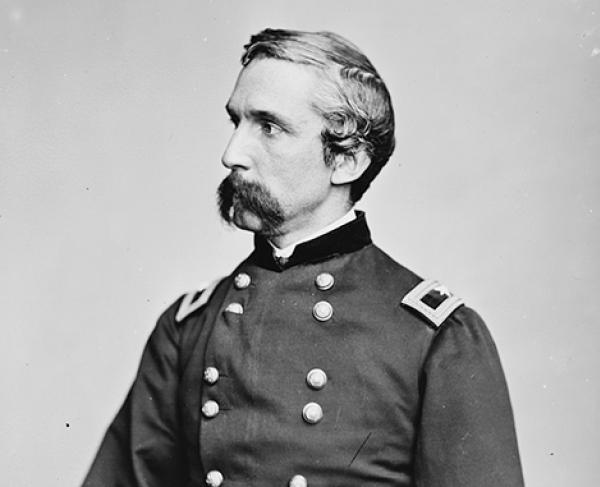In July 1862, Bowdoin College professor of modern languages Joshua Lawrence Chamberlain was given command of the 358-man 20th Maine. Despite having no military experience, Chamberlain offered his services to Governor Israel Washburn with a promise that what he did not know, he knew how to learn. One year later, on a hillside marked by boulders, Colonel Chamberlain directed his regiment of Union soldiers to execute a bayonet attack that is credited with changing the course of the Civil War. How did a cultured professor with only a year of military training become a hero of the defense of Little Round Top? That’s a story of adaptability.
A Story of Adaptability
Approximately 2 miles south of Gettysburg, PA, with a rugged, steep slope, Little Round Top was a coveted defense point in the intense fighting between Union and Confederate forces during the Civil War. As our story opens on July 2, 1863, Little Round Top is held by Union soldiers, but because of a series of miscommunications and mishaps, Little Round Top is exposed to a Confederate attack.
Sensing that something significant might happen at Big Round Top and Little Round Top, Major General George Meade sends his chief of engineers to assess the areas he finds completely undefended. Messengers are quickly dispatched to request immediate assistance, and Colonel Strong Vincent responds, taking his men to the hill. As they arrive, Colonel Vincent forms the four regiments under his command into a line, with Colonel Chamberlain’s forming the extreme left flank. The last thing Vincent tells Chamberlain is: “This is the left of the Union line. You are to hold this ground at all costs.”
As Confederate soldiers advance toward the center of the Union lines, Colonel Chamberlain calls his company commanders together. They form a new plan – they will create a right-angle formation, extending their line further to the east. Having broken the center of the Union lines, Confederate soldiers turn their attention to Chamberlain’s line, hoping to turn it in and capture Little Round Top. Running short on ammunition, Chamberlain once again huddles with his soldiers, including Lt. Holman S. Melcher, who suggests advancing the colors in a forward movement to retrieve the wounded. Hearing that suggestion, Chamberlain expands the idea and orders a full bayonet charge down the slope, which pushes back the Confederate soldiers and secures Little Round Top for the Union.
Lessons in Adaptability
Colonel Chamberlain’s story offers us three important lessons in adaptability:
(1) Why Matters. When we face friction, uncertainty, and rapid change, why we need to accomplish our goals is constant, but how we intend to achieve our goals may need to change. When, in moments of change, if we focus too much on the “how,” we may find ourselves walking a path doomed to fail while our equivalent of the Union line is decimated. Chamberlain clearly understood his directive was about the why not the how.
(2) Learning Leads to Winning. When we ask questions, listen, and observe, we often find solutions hidden in how other people think. Having access to those different ways of thinking is critical when we need to shift approaches. Chamberlain promised to learn when he took command of the 20th Maine and honored that commitment throughout the battle of Little Round Top.
(3) Decision-Making Should be Decentralized. When we face rapidly changing circumstances, the team members closest to the events should have the latitude to address the situation as needed. When we reserve all decision-making to the senior leaders, we slow down our response time and increase the possibility that information will be lost or miscommunicated in the transfer up and back down the organizational chart. Chamberlain had wide latitude to address the situation before him, and his decision was the turning point in the battle.
Conclusion and Call to Action: Since the establishment of the US Military Academy at West Point in 1802, the armed services have been in the business of leadership development. As a leader, what lesson in Chamberlain’s story is most impactful to you? How can you leverage that lesson today?


















